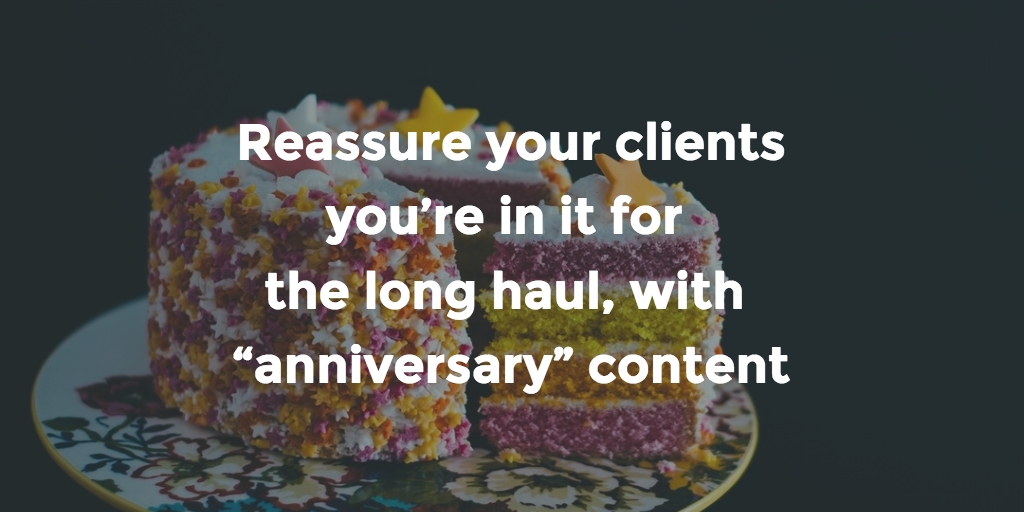Creating content

Are you looking for a way to provide reassurance to your prospects and clients that you’re into it for the long haul – a reliable resource, who they can count on for meeting their needs for years to come? And, that you’re dedicated to understanding the issues that they’re facing, so your work fits their reality?
One way to do this is through what I call “anniversary newsjacking” content.
One way to do this is through what I call “anniversary newsjacking” content.

Have you ever felt stuck in your professional growth? You’re doing small jobs for clients, and you’re glad to have them, but you know you can do so much more? And your clients think of you as someone who does small jobs reliably, and that’s it?

Case studies are a good thing, right? They prove that you can implement and get results, and they show you to be the hardworking and diligent professional that you are. A lot has been written on why you should publish case studies (including this blog).
But then I started thinking (good thing, that…). There are some serious downsides to these things. Maybe, more downsides than upsides. At least, unless you think through how to mitigate those downsides.
But then I started thinking (good thing, that…). There are some serious downsides to these things. Maybe, more downsides than upsides. At least, unless you think through how to mitigate those downsides.

Sometimes, getting known for your expertise feels like shouting into a windstorm. Nobody hears you – your ideas just get drowned out in all the noise. It’s frustrating – you have good ideas to offer, and you want to get recognized for what you know.
But having your thoughts get a fair hearing seems to be only accessible to “experts” who are already well known in the marketplace of ideas.
But having your thoughts get a fair hearing seems to be only accessible to “experts” who are already well known in the marketplace of ideas.

Your thought leadership content efforts – your blog posts, articles, speeches and others – should have one main purpose: to put you in position to sell. That’s what it’s all about. I think that there are four main ways to do this, and these four ways form an upside-down pyramid.

You may have amazing insights to offer your clients, and the experience needed to turn those insights into benefits for them. But, if too few people know what you have to offer, you won’t get a chance to make your mark.

“Radio is sound. TV is pictures”, our tough-as-nails television news instructor barked at us in journalism school. As a master of the 60-second story, George Frajkor didn’t have much patience for us print-preferring writer types. George felt it was entirely possible to pack a whole story into 150 words. That is, if we could “show” using live footage rather than just “tell” via a talking-head reporter.

